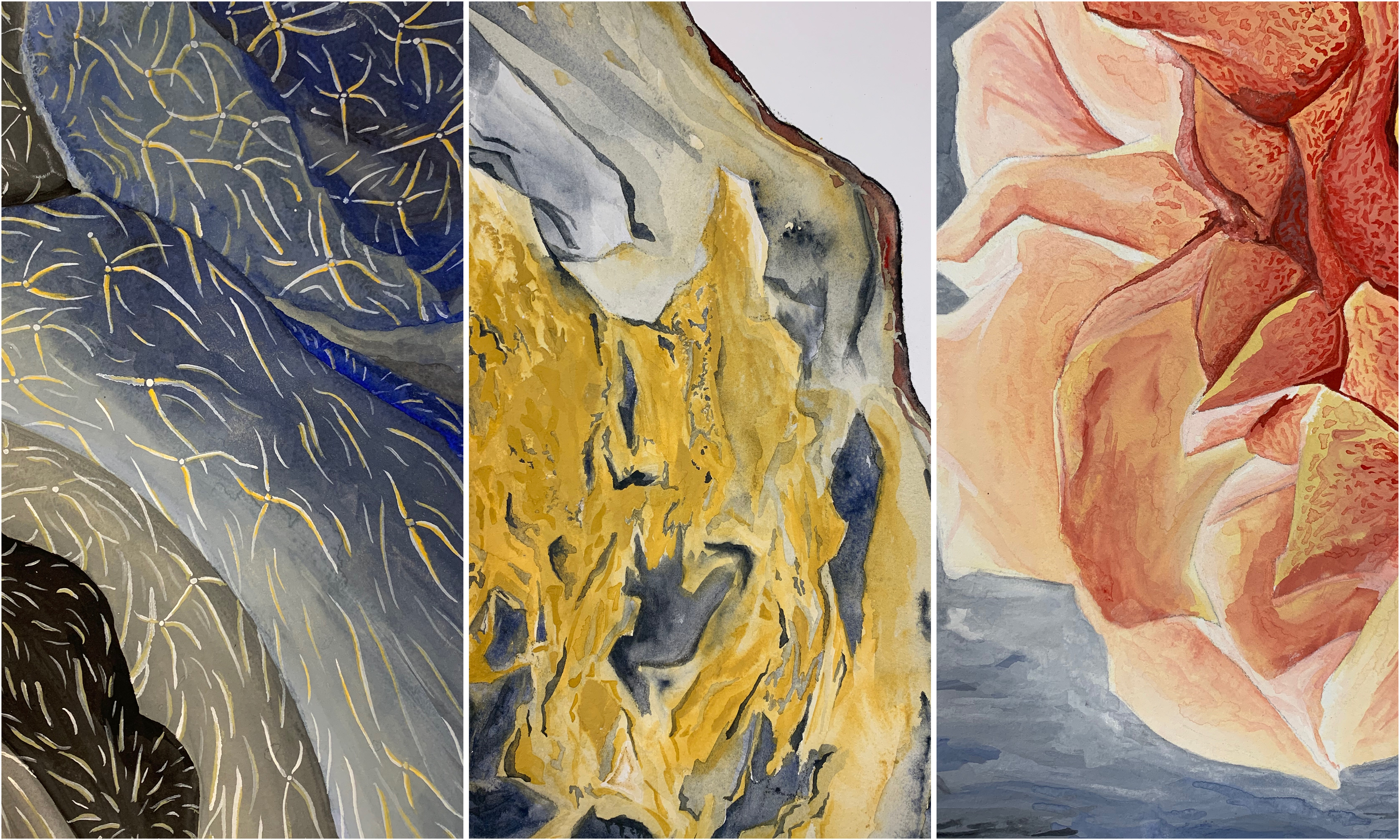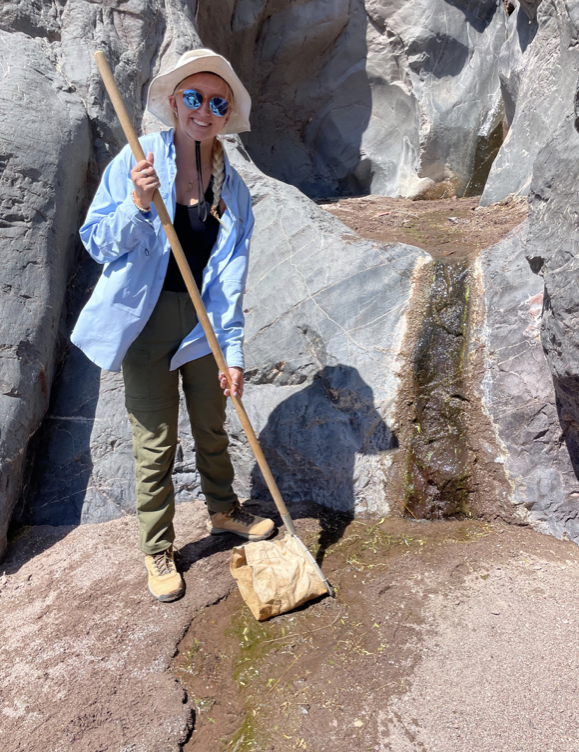Sevilleta Field Station provides unparalleled research experience for undergraduates
October 26, 2023 - Geneva Sandoval
Since 2006, students from across the nation have had the opportunity to participate in a truly unique summer research program at the 8th largest wildlife refuge in the lower 48 states.
Thanks to the Sevilleta Research Experience for Undergraduates (REU) program, 167 students over the past 17 years have had the opportunity to blend science and art into an independent research experience that has impacted their future careers.
The four different biomes that converge at the Sevilleta National Wildlife Refuge offer an ideal setting for research, including investigations into how climate variability and climate change affect plant and animal communities at biotic transition zones.
The REU program attracts students from across the United States, and it is highly competitive to gain admission. With a strong track record of recruiting students from underrepresented groups in the sciences, many participants go on to pursue careers in research or environmental studies.
The program’s purpose aligns with the refuge's goals— to preserve and enhance the integrity of its ecosystems, managing them as closely to their natural state as possible. This involves the use of management tools and techniques consistent with maintaining natural ecological processes.
The program's impact reaches far beyond the 10-week summer experience, igniting a passion for conservation, inspiring interdisciplinary collaboration, and shaping the future of environmental research.
This year’s 2023 summer program attracted students from California to Vermont, and everywhere in between. Representing 11 states and 15 universities around the nation, this summer’s cohort brought together a range of majors including biology, ecology, zoology, environmental science, and fine arts.
After being carefully matched with mentors in a variety of fields, students are given the opportunity to plan, conduct fieldwork, analyze data, and present their results publicly with guidance from faculty, staff researchers, and other students in various fields.
Funded by the National Science Foundation (NSF), and headed up by PI and Distinguished Professor of Biology, Scott Collins, the REU annually provides 12-15 students from across the country with the opportunity to bring their research interests to life.
One of the students from this year’s cohort, James Loomis, is a dean’s scholastic honors student at Pittsburgh State University. Loomis’ study while at the Sevilleta National Wildlife Refuge centered around burrowing owls. He was able to observe and analyze these charismatic animals’ habitats, diets, and common success-supporting behaviors.
“As I ... began to spend time with them in the field, I quickly learned of the important role they play in the ecosystem and how much we could learn from them that could help inform future conservations’ decisions... Having the opportunity to study them in a more naturally managed environment allowed for insights into ecological interactions and dynamics of the food webs of which they are a part.”
Loomis’ favorite aspect of the program was the “collaborative spirit that comes with working so closely with people with diverse backgrounds and research topics.” He also claims that it cemented his goal to pursue community ecology.
An interesting aspect of the program according to Collins is “the inclusion of two environmental arts undergrad students. We see the value in blending science and the arts.”
These art students are funded through the Sevilleta Long-Term Ecological Research (LTER) program and often join ecology students in the field. They occasionally provide lessons in photography, painting, or other artistic specialties to enhance the interdisciplinary nature of the program, uniting science, and the arts.

'Light Translations: Details of Plant-Environment Interfaces' by Sam Fertik
The paintings explore how patterns of plant surface structures align with the nourishing and potentially damaging environmental factor of sunlight.
Sam Fertik, an art student from the University of Vermont, says that it was “an incredible opportunity” for him to combine his interests in plant biology with his passion for creating visual art.
Fertik says that his art practices over the summer continually evolved as his “connection to Sevilleta and New Mexico became stronger and more complex. Everywhere you look there was some new observation, and while very vast and open, this place is full of detailed biological happenings.”
Overall, the experience opened his eyes to a whole new way of learning, as he says, “This summer helped me to realize the importance and benefits of reaching out to others for guidance and collaboration. Learning is strongest when others are involved, and the relationships that I formed are what I consider most important. Working with mentors, cooperating on project ideas, or even just having conversations with friends, always taught me something new.”
He continues, “I think that often academics are attached to some idea of seclusion, but ideas, especially ecological thinking, become more powerful when we involve others and share ideas. Moving forward I want to continue to work closely alongside others because I saw this summer how it can lead to even greater products.”
The resident manager of the field station is Alesia Hallmark, who runs all day-to-day operations of the REU site program. As she puts it, “students are immersed in their study ecosystem. Their study site comes right up to their door!”
Collins agrees, saying that students are “essentially embedded in a research environment.” Because they get to live on-site, students have easy access to all of the field station’s research areas, lab facilities, and interactions with visiting researchers.

From Eckerd College in St. Petersburg, Florida, Signe Renstrom is “super passionate about conservation biology and understanding how ecosystems work in order to implement proper restoration or conservation efforts.”
This summer, Renstrom was able to do just that. After researching 4 types of water sources on the Sevilleta, she was able to determine which water sources were most beneficial to the refuge and which needed restoration work.
Samantha Veloz, an environmental sciences major at the University of Texas at El Paso, has an “unwavering fascination with science” and applied for the Sevilleta REU program “with the intention of delving into this... scientific domain.”
Her combined interests led Veloz to investigate the impacts of altered monsoonal precipitation patterns on the biogeochemistry and subterranean activity of grasslands. After taking part in this summer’s program, Veloz has decided that she will be continuing this research throughout her last semester.
“This journey has proven to be an unforeseen opportunity, delivering far more than I had ever envisioned and surpassing my initial expectations,” she says.
Within these experiences, the field station offers another important lesson in conducting research: learning how to try, and try again. Hallmark wants students to have “a real research experience, including failures, redesigns, and challenging field situations.”
Some of these challenges can include delayed supplies, field difficulties, and changing hypotheses. Through it all, the program provides support, which results in an experience akin to a Master's project. By the end of the summer, students gain confidence and identify as "real scientists."
The program fosters personal growth, encouraging students to discover more about their motivations and determination. In addition to the field work, students gain from trainings in public speaking, research ethics, and real-world conservation through interactions with US Fish and Wildlife Service staff. With almost daily activities put in place, there is emphasis on the importance of student interactions with each other and the community.
Students take on an active role in shaping their own research projects, including designing permits, defending their ideas, conducting research, analyzing data, and presenting their findings at a final symposium or potentially publishing their work in scientific journals.
This year, oral PowerPoint presentations were replaced with a poster symposium, which Hallmark says was a fun change because students enjoyed the one-on-one interactions and were able to leave with a powerful sense of pride and ownership over their projects.
Hallmark describes the Field Station as the central meeting place in the heart of the 229,674-acre refuge where the Sevilleta REU program has thrived and successfully woven together the disciplines of science and art for over a decade.
“It’s truly a place where people and ideas come together.”
